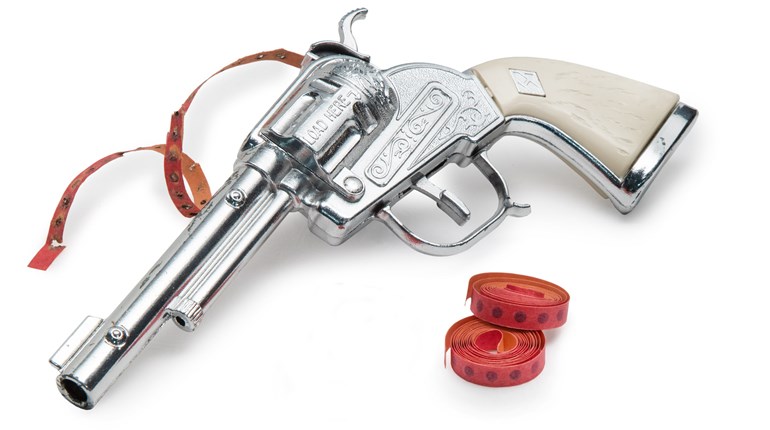
We do not need new “red-flag” laws aimed at guns; we need to return to the old red-flag laws that protected us from dangerous people. Red-flag laws are also called “emergency substantial risk orders.” A judge issues them if he or she finds “a person poses a substantial risk of personal injury to himself or others in the near future by such person’s possession or acquisition of a firearm…,” quoting the current Virginia red-flag law (§ 19.2-152.14).
The theory behind red-flag laws is that some people are obviously dangerous to others, and therefore these dangerous people need to be disarmed to attempt to prevent them from criminally misusing a gun. After the police show up at the “dangerous” person’s door (who has no knowledge that this proceeding has been initiated), they must give up their guns. Later, the courts would decide if a substantial-risk order is justified, according to evidence presented in court.
Red-flag laws have been a political response to the actions of murderers, such as the killings committed in Isla Vista, Calif., on May 23, 2014. According to news reports, this murderer killed six people. He killed three people with a gun. He also stabbed three people to death and injured others when he ran them down with his car. Had the authorities been able to ascertain that this individual was a dangerous person in advance, today’s red-flag laws would have left him without a gun, but fully able to access the other weapons he used.

Red-flag laws are often being used today by politicians opposed, in every way, to the individual’s right to keep and bear arms. These politicians see these laws as an opportunity to reduce gun ownership and to take away the right of due process from American citizens.
Red-flag laws are hardly new. We have had laws like them for two centuries. But instead of only taking away guns from people who are believed to be a substantial risk to others, these older laws also prevented access to other dangerous weapons.
I am currently producing a comprehensive encyclopedia of American mass murder, with a grant from the NRA Civil Rights Defense Fund. In the period from 1657 through 1899, I have found 854 mass murders committed with weapons other than firearms (axes, hatchets, knives, razors, blunt objects, explosives, poisons, strangulation, drowning, hanging and a few other odd methods). Today’s mass murderers still use weapons other than guns (autos, blunt objects, knives and arson), but you likely won’t hear this on national news-you’ll only hear about guns.
The old laws were for committing persons who were mentally ill and were believed likely to hurt others, or more commonly, hurt themselves, going back as far as the 17th century. These were emergency commitments until a court hearing could decide if the person was sane enough to be released. These laws were increasingly formalized in the 19th and 20th centuries to provide due process—the right of the accused to be present at the hearing; the right to cross-examine witnesses; and the right to an attorney.
These older laws are still used on occasion. A few weeks after the Newtown tragedy, a science teacher in Bennington, Vt., posted some apparently threatening videos. He was hospitalized “following a mental health evaluation,” according to news reports, and disarmed, as he was in a hospital.
So why have states passed these new, much-less-effective red-flag laws? In the 1960s, an odd and short-lived coalition sought to reform our mental-health system. One group in this coalition was composed of well-meaning doctors who sought to force the states to provide better care to patients in state mental hospitals. Their theory was “treat them or release them.” They felt that no state would release dangerously mentally ill people, as the legislature would obviously find the money for treatment. The other group was the American Civil Liberties Union (ACLU), whose activists actually denied the very existence of mental illness. Their goal was to so hamstring the commitment process that few mentally ill people would be hospitalized.
The ACLU’s goal was met by federal judges, helped by the fact that some states, such as Wisconsin, had failed to adequately provide due process for people being committed. The patient in one such case was a teacher hanging from the second-story handrails of an apartment complex, screaming that communists were taking over the country.
The claim was that the old system often led to abuse. Doubtless it did. Too much state power inevitably leads to trouble. But then, One Flew Over the Cuckoo’s Nest was dramatized fiction. The book was fiction. The film was not a documentary. It made a general and very important point, but Ken Kesey wrote it after taking LSD while working in a mental hospital. It should have been used as a check on the system—for reform, not for an annihilation of the system.
The net effect of that aforementioned short-lived coalition, with Kesey’s book as a catalyst, was the emptying of state mental hospitals from the 1960s into the 1980s. States responded by closing empty mental hospitals. Today, there is often nowhere to go for those who would have been committed in 1960, or even for those who voluntarily seek help. Those perhaps well-meaning doctors had achieved something very dangerous.
The ACLU achieved its goal of making it very difficult to commit persons with serious mental-illness problems. Our streets, park benches and libraries soon filled up with often mentally ill homeless people. Murder rates also rose. While most mentally ill people are not dangerous, murderers and other felons are disproportionately mentally ill. It is no coincidence that many of our recent mass murderers have exhibited evidence of mental illness either before or after their crimes.

The result of these 1960s and 1970s legal battles was that most states revised their commitment statutes in ways that made it very difficult to hospitalize people who were really dangerous. As an example (sadly, one of many), the mass murderer in the Aurora, Colo., theater in 2012 was so obviously dangerous that his psychiatrist alerted the police. While the details of exactly who said what to whom and when have not been released, what is clear from investigative reporting is that the psychiatrist’s efforts show that she considered the killer to be “high risk” on the Behavioral Evaluation and Threat Assessment (BETA) matrix.
Like many other states, Colorado law allowed for an emergency commitment for a 72-hour observation period. As in many other states, a police officer or a variety of mental-health professionals may order such a person to be taken into custody; however, the emergency-commitment procedure (C.R.S. § 27-65-105(a)(1)) only applies to persons who are “gravely disabled” or who present an “imminent danger to others or to himself or herself.”
Who is gravely disabled? Colorado law had two different definitions of “gravely disabled.” One definition included mentally ill persons at risk because they are unable or unwilling “to provide himself or herself with the essential human needs of food, clothing, shelter and medical care” or “lacks judgment… [so] his or her health or safety is significantly endangered and lacks the capacity to understand that this is so.” This did not describe the killer, whose actions in booby-trapping his apartment and planning the crime showed a person of considerable intelligence. (He was working on his Ph.D. in neuroscience when schizophrenia hit.)
The other definition of “gravely disabled” would fit many mentally ill persons, but not that killer. It included persons diagnosed with schizophrenia, but required that such a person must have been hospitalized “at least twice during the last thirty-six months.” This meant that a mentally ill person who has gone from well to severely mentally ill in a few months, as is alleged to be the case with the theater killer, could not be considered gravely disabled until at least three years later. Worse, a judge could not direct police to bring the person to court for a hearing. If you are convinced the government is plotting against you, why would you accept an invitation to a commitment hearing?
Our prisons and jails today are disproportionately occupied by the mentally ill. So are the tragic headlines after each mass murder. Building and operating mental hospitals is not cheap, but the same is true for jails and prisons.
Until the general public and judges fully understand the nature of what deinstitutionalization of the mentally ill really did to America, there will not be the public will to correct this well-intentioned, but disastrous error. It is time to admit that the theories behind deinstitutionalization were a mistake. They were often well-intentioned theories, but they do not have much to do with the real world. Today’s red-flag laws are not the solution to this problem; better mental-illness commitment policy is.
Clayton E. Cramer teaches history at a college in Idaho. His ninth book, Lock, Stock, and Barrel: The Origins of American Gun Culture, was published in 2018.

































